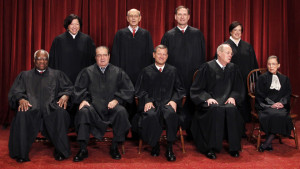
The true meaning of one person, one vote will be put to the test on Tuesday when the U.S. Supreme Court hears oral arguments from a Texas case to determine whether states should divide their electoral districts according to the total population of that district, including those not yet old enough to vote or those who are undocumented and therefore not U.S. citizens and registered to vote, as is currently the case, or whether only eligible voters should be counted in determining district lines, a result that would shift voting power away from more urban, minority districts to rural white districts in the state.
“There’s only one explanation for the court fight. The plaintiffs in Texas are interested in stemming the growth of Latino political power,” said Thomas Saenz, president and general counsel of the Mexican American Legal Defense Fund.
The case boils down to one fundamental question for the justices, should states count everyone living in a district or only those eligible to cast a vote when determining legislative districts.
Those bringing the case to the Supreme Court allege that by counting every person in a district, the actual number of voters participating in that election will be vastly different than numbers upon which the district is actually drawn.
The Obama Administration and Texas Republicans, two entities not often on the same sides politically, are both arguing for a continuation of the total population method for districts. The State of Texas, on the other hand, is in general agreement but would like the Court to provide for states to decide for themselves which method to use on a case by case basis.
“Blue states will surely continue to draw districts based on total population, but we can expect red states to choose a narrower metric, one that diminishes the voting strength of minority communities and others with large non-voting populations,” said Ohio State University law professor Dan Tokaji.

Recent Comments